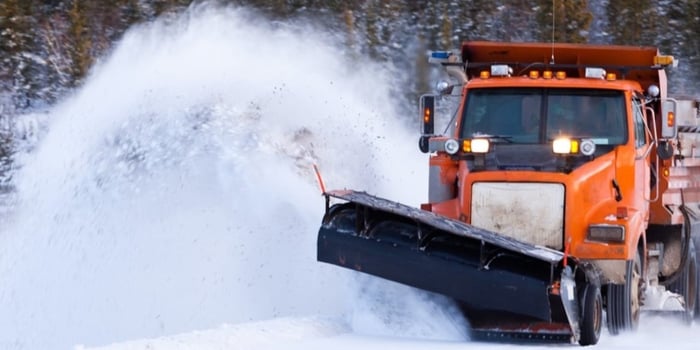
Table of Contents
This month's webinar was hosted by NSIM, Jimmy Perron (CEO) and Francois Bouchard (Business Development Director). Rasters.io helps municipalities streamline public works operations by replacing paper maps with live digital routes that improve training, visibility, and accountability.
Webinar Video
Managing routes, crews, and assets efficiently is essential for every public works operation. Yet for many municipalities, traditional methods like paper route maps and manual reporting continue to slow progress. During our recent webinar, we explored how Rasters.io is helping municipal fleets replace outdated workflows with smarter, data-driven tools.
Moving Beyond Paper-Based Route Maps
Paper route maps and static spreadsheets make it difficult to track real-time activity or confirm progress during operations. Rasters.io simplifies this process by bringing those same routes into a live digital environment connected with Geotab.
Fleet managers can see where each vehicle is operating and monitor progress. This visibility helps teams coordinate more effectively, reduce paperwork, and ensure coverage across all service areas.
Closing Skill Gaps and Speeding Up Training
Seasonal turnover and new staff onboarding are constant challenges for municipal fleets. Rasters.io helps new operators get up to speed faster by presenting routes in a clear, visual format. With step-by-step guidance available on screen, even those unfamiliar with an area can complete routes confidently and consistently.
Improving Accountability and Efficiency
Rasters.io enhances both safety and accountability by making route verification easy. Managers can quickly confirm completed work, identify missed segments, and access proof of service when needed.
The ability to respond quickly to changing conditions such as snow accumulation, equipment issues, or citizen requests helps municipalities stay efficient and transparent while maintaining a high standard of public service.
Questions from the Audience
During the live session, fleet managers and public works professionals asked thoughtful questions about real-world implementation and performance. Here are a few highlights from the Q&A:
Q: How long does it take to implement Rasters.io once a municipality decides to move forward?
Implementation is typically fast and straightforward. It really depends on the number of routes you will be importing, and if you have to create the routes from scratch or not.
Q: Can Rasters.io handle multiple types of operations like snow plowing, waste collection, and street sweeping?
Yes. Rasters.io supports a wide range of public works activities.
Q: How difficult is it to import existing route maps or GIS data?
Importing existing shapefiles or GIS data is simple. If you do not have GIS data or existing shape files, you can have an experienced driver run the route, then import that route using the Geotab data.
Modern Tools for Modern Fleets
Rasters.io is helping municipalities across Canada modernize their operations, reduce administrative workload, and make faster, data-informed decisions. As fleet technology continues to evolve, tools like Rasters.io are proving that smarter route management leads to better service and safer communities.
DiCAN partners with innovative solutions like Rasters.io to help municipalities modernize fleet management and get the most from their Geotab investment.
👉 Contact info@dicaninc.com for pricing information, or any additional questions.





